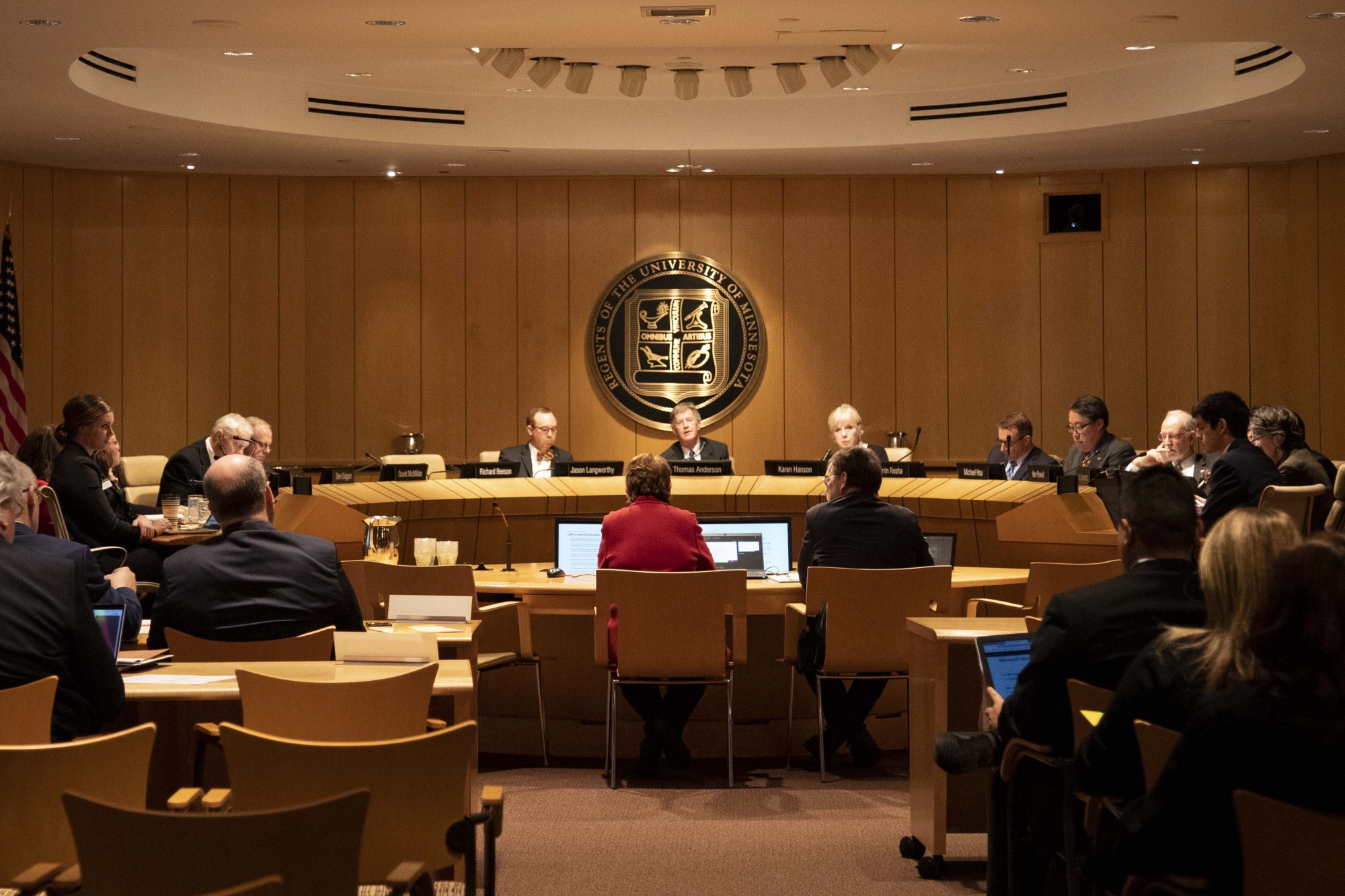In their final meeting of the decade, the University of Minnesota Board of Regents focused on a new real estate plan, a record year for research funding and continued a discussion about how to approach renaming a building on campus.
The board took little action over two days of meetings except for confirming several contracts for administrators. One conversation, the contract for incoming Provost Rachel Croson, was a lively discussion about a rising trend of administrative salaries with some regents arguing the deal was too expensive. It passed 8-4.
Building renaming policy
After a push to rename buildings last spring failed, a question remains: How should the University approach renaming a building?
President Joan Gabel is currently working to set up policy guidelines for how the University would approach renaming in the future, hopefully avoiding the often messy debate — one meeting was commandeered by protestors — of the spring.
“I think it was the lack of a policy that got us into the quagmire that we were in,” Regent David McMillan said at the meeting.
But while the top question is clear, it opens a Russian nesting doll of others.
They included who can bring a renaming request, what information will namesakes be judged on, how that information is gathered and how regents would be involved.
Looking to hear from regents to guide the creation of policy, Gabel shared how other schools handle the topic. These schools vary in approach, some with specific questions around conflicts with core mission goals and the strength of evidence, where others have broader ponderings focused on recognizing diversity and the nature of change.
“These are complicated. There is a reason why no best practice has emerged and why these discussions are extremely hard,” Gabel said at the meeting.
Board Chair Ken Powell said at the meeting he was struck by part of the University of Michigan’s policy which stresses approaching these discussions with caution and humility.
“We should remember that it is very easy to blame those in the past for lacking the knowledge, wisdom and values that we seem to possess today,” Powell said, reading from the policy.
Regent Darrin Rosha said he liked the way Stanford University approached renaming because it had a specific way to identify facts. Rosha also posed an idea of naming buildings for a determined amount of time. This would allow revisiting the name later, weighing whether they want to acknowledge someone with more recent contributions to the University.
Gabel will take these discussions and begin to craft the University’s own policy. The board will have at least two more discussions about this, with the latter being a vote on the procedure.
East Gateway Project
Members of the University of Minnesota Foundation presented early renderings and details of the East Gateway Project, a development plan that would scrap most — if not all — of the buildings in Stadium Village between University and Washington Avenues.
“I would look east of this building and I think that project that we are talking about right now has got to be the most underdeveloped, richest property in this city,” said Regent Steve Sviggum.
The area includes Stub and Herbs, the Minneapolis Fire Station 19, Raising Cane’s, and Burger King among many other restaurants and businesses. In their wake, early renderings show some tall, abstract looking buildings containing retail and restaurants on the ground floor with residential units, space for hotel rooms and offices on the upper floors.
The plans also include land currently occupied by the Dinnaken apartments, which are owned by the Foundation and provide affordable housing for students.
The developments would be a public-private partnership where the Foundation would lease land to developers to build on. The Foundation would maintain control of the first floor and could potentially split some of the profits from upper rental space with developers.
The area could also be an answer to a constant parking shortage, with a possible parking garage for students who may live off-campus.
“We have only one chance to do something spectacular,” said Regent Richard Beeson at the meeting.
A more concrete concept plan is set to be discussed at the regents meeting in February.
Record year for research
The University had a record year in research funding bringing in $863 million, an increase of almost 9 percent from last fiscal year.
“I don’t remember an increase that large in my memory,” said Chris Cramer, vice president for research, at the meeting.
The Medical School had a particularly fruitful year, bringing in 41 percent more money for research, Cramer said. He also emphasized that the University has had 151 startups launched since 2006, with 19 of those taking place over the course of the last fiscal year.








